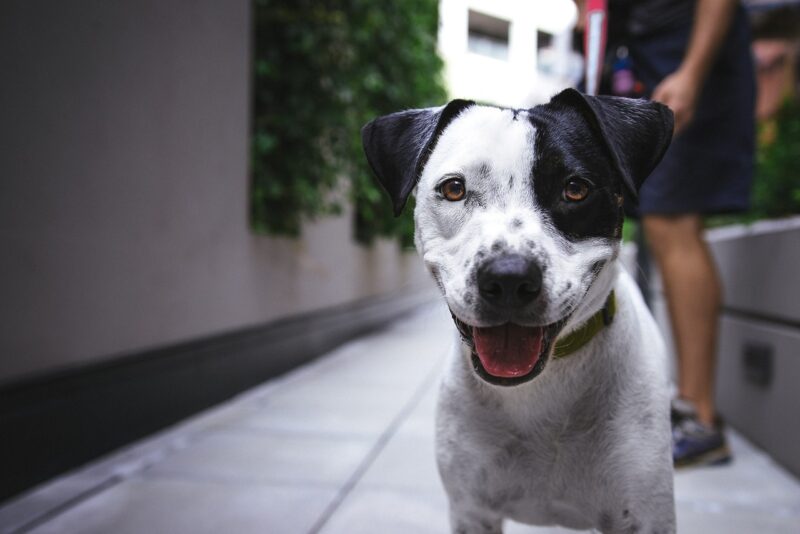Pet Enrichment Ideas for Dogs: How to Keep Your Canine Companion Entertained
November 15, 2024

As dog owners, we all want our furry companions to be happy and engaged. Pet enrichment is essential for a dog’s well-being. It helps to alleviate boredom, reduce behavioral issues, and stimulates their minds and bodies. In this guide, we’ll explore a variety of pet enrichment ideas specifically designed for dogs, ensuring that they remain entertained and mentally stimulated.
1. Understanding Pet Enrichment
Enrichment activities are designed to enhance your dog’s environment with physical, social, and mental challenges. In nature, dogs spend their days exploring, foraging, and interacting with their surroundings. However, our modern lifestyles sometimes keep them confined indoors, leading to restlessness and boredom.
**Types of enrichment activities include:**
- Physical Enrichment: Activities that promote exercise and physical health, such as walks, play sessions, and agility training.
- Mental Enrichment: Challenges that stimulate your dog’s brain, such as puzzle toys and training sessions.
- Social Enrichment: Opportunities for socialization with other dogs and humans, promoting healthy interactions and friendships.
Enrichment activities are not just entertainment; they are vital to your dog’s mental and emotional health, leading to a happier, more fulfilled canine companion.
2. Fun and Engaging Activities for Dogs
Here are some creative and enjoyable enrichment ideas to keep your dog entertained:
**A. Interactive Toys and Puzzle Feeders**
Interactive toys and puzzle feeders are perfect for engaging your dog’s mind and slowing down their eating habits.
– Kong Toys: Fill a Kong with peanut butter, treats, or frozen dog-friendly ingredients and watch your dog work to get the goodies out.
– Puzzle Feeders: These feeders require your dog to solve a puzzle to access their food or treats, offering a fun challenge.
**B. Scent Games**
Dogs have an incredible sense of smell, making scent games an excellent form of enrichment.
– Hide-and-Seek: Hide treats around the house or yard and let your dog find them using their nose.
– Scent Trails: Create a trail of treats or kibble leading to a hidden surprise for your dog to follow and discover.
**C. Training Sessions**
Training doesn’t have to be limited to basic obedience. Use training sessions to teach your dog new tricks or skills.
– Trick Training: Teach fun tricks like roll over, play dead, or spin.
– Agility Training: Set up a mini obstacle course in your backyard for your dog to navigate. Use chairs, cones, or hula hoops to create challenges.
**D. Outdoor Adventures**
Take your dog on new adventures to provide them with new experiences.
– Nature Walks: Explore new trails or parks where your dog can sniff around and experience the great outdoors.
– Dog Parks: Visit a dog park to allow free play with other dogs, enhancing their social skills.
**E. DIY Enrichment Activities**
Get creative with home-made enrichment activities using household items.
– Towel Roll-Up: Hide treats in a rolled-up towel and let your dog unroll it to find the hidden treasures.
– Cardboard Boxes: Fill a cardboard box with crumpled paper and treats for your dog to dig through.
3. The Importance of Variety
Dogs thrive on unpredictability, so keeping their enrichment activities varied is crucial. Rotate toys, change up walks, and learn new tricks to keep them engaged. The more diverse their experiences, the more likely they are to exhibit positive behavior and happiness.
**Establish a Schedule**
Integrating enrichment activities into your dog’s daily routine can significantly impact their mental health. Consider establishing a schedule that includes:
– Daily walks or exercise sessions.
– Regular training and puzzle toy sessions.
– Scheduled playdates with other dogs.
4. Monitoring Your Dog’s Behavior
As you introduce new enrichment activities, observe how your dog responds. Dogs may show signs of stress or confusion when overwhelmed, so it’s essential to adjust the activities according to their individual preferences and energy levels. Positive behaviors can signal that your dog is enjoying the enrichment.
**Signs of Stress to Monitor:**
– Excessive barking or whining.
– Hiding or avoidance of activities.
– Destructive behavior, like chewing furniture or digging.
Providing a balance of activities that stimulate both their minds and bodies will allow your dog to thrive.
5. Conclusion
Pet enrichment is essential for keeping your dog entertained, healthy, and happy. By incorporating a variety of engaging activities into their daily routine, you can provide stimulating physical and mental challenges. Remember that every dog is unique, and it may take some time to find the best enrichment strategies for your furry friend. With patience and creativity, you can create a fulfilling environment that nurtures your canine companion’s well-being. h3>
If you’re unsure where to start, try one or two of the ideas outlined above and observe how your dog responds. Always look for opportunities to enrich their lives, and your reward will be a happy, engaged dog who loves spending time with you!








